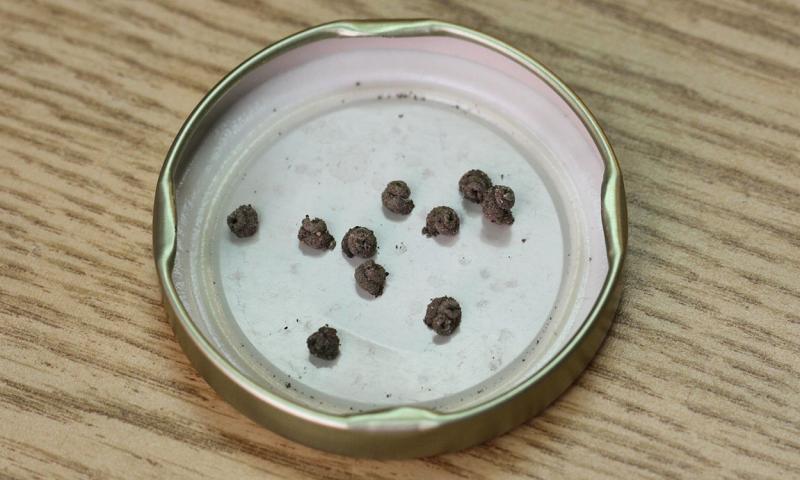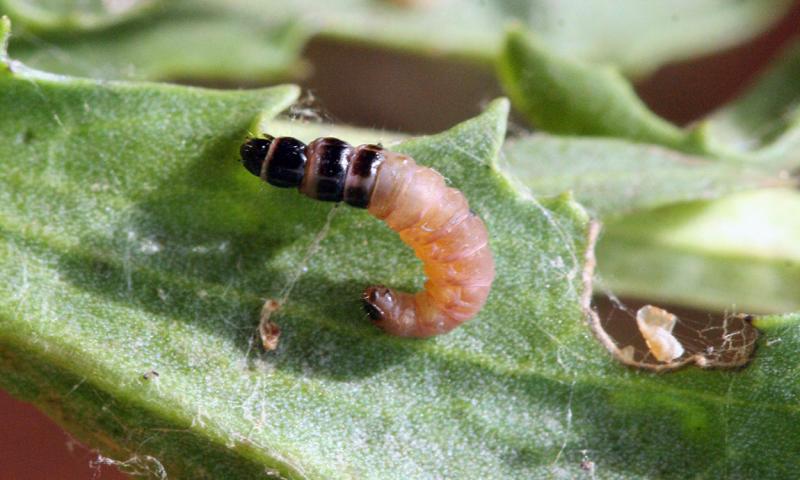
Originally Submitted: August 6, 2021
A unique insect that has been observed in South Dakota is the snailcase bagworm. These moths were introduced to the United States from Europe in the 1940s. Since then, they have spread to many states across the country, including South Dakota.
Snailcase bagworms are wingless moths that reproduce through parthenogenesis (without males). They spend their entire life in spiral-shaped “snail” cases, which they build around themselves using a combination of silk, soil particles and fecal matter (Figure 1).
Profile

Snailcase bagworms are mostly green or red in color, with black heads and markings (Figure 2). When coiled, their cases can grow to approximately 1/8 of an inch in diameter. The larvae overwinter in their mother’s case and emerge in the spring to feed on plant leaves. Snailcase bagworms feed on a wide variety of different plants, including fruit trees, squash, corn and alfalfa. However, they rarely cause serious defoliation. As the larvae feed and grow, they build cases around themselves. In early to mid-summer, the larvae will climb up any surface (e.g., trees, buildings, vehicles, patio furniture) and pupate within their cases. Adults emerge in August to lay eggs in their cases before crawling out to die. The new larvae hatch in late summer and, as mentioned previously, remain in their mother’s case until the following spring.
Management
Larval feeding from snailcase bagworms looks similar to leaf miner activity with small, excavated areas in the leaf tissue. However, this feeding injury is often very minor and rarely requires treatment. If necessary, plants can be treated with products containing Bt or spinosad to reduce the larval populations. Larvae can also be managed before their migration stage to prevent them from attaching themselves to buildings and other surfaces. This can be done by simply brushing or spraying them with water to dislodge them. Once the bagworms attach themselves to surfaces and pupate, they become much more difficult to remove.


